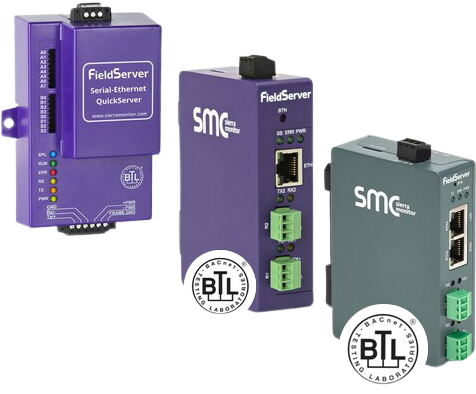A NEMA and IP Rating Complete Guide - Part 2
What exactly is an IP rating?
- The IP rating system was established by the International Electromechanical Commission (IEC), a worldwide organization for standardization.
- Each IP rating has two numbers, both of which give you information about the protection level. A higher number means greater protection against solids and liquids.
- The first number (0-6) refers to the level of protection against solid objects and moving parts, such as dust, debris, or other solid matter.
- The second number (0-8) references the level of liquid and moisture protection.
- IP Rating Third Number – Protection against mechanical impacts (commonly omitted, the third number is not a part of IEC 60529)
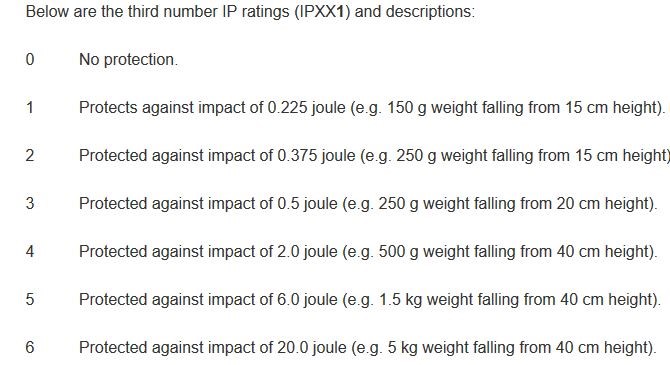
Fig. 1: IP Rating Third Number
What IP rating will you need?
If you don't anticipate a harsh environment that is extremely dusty or wet then a lower IP rating would suffice.
In places that will have a lot of dust, debris, or potential to be in contact with any solids or liquids, you'll
want to make sure that the IP ratings are high and that you have adequate water resistant or waterproof coatings
on your products.
What are the differences between IP65, IP67, and IP68?
The differences between commonly sold IP65, IP67, and IP68 strips are slight, but very important.
- IP65: Water Resistant. "Protected against water jets from any angle" *Do NOT submerge IP65 products, these are not waterproof.
- IP67: Water Resistant Plus. "Protected against the events of temporary submersion (10 minutes)" *Do NOT submerge IP67 products for extended periods, these are not waterproof.
- IP68: Waterproof. "Protected against the events of permanent submersion up to 3 meters"
Examples of items with IP ratings
- Umbrella: IP-01 or IP-02 (depending on umbrella)
- Chain-link fence: IP-02
- Chicken wire: IP-20
- Screen: IP-30
- Kevlar cloth: IP-40
- Tent (camping): IP-42
- Bottle of wine: IP-67
- Submarine: IP-68
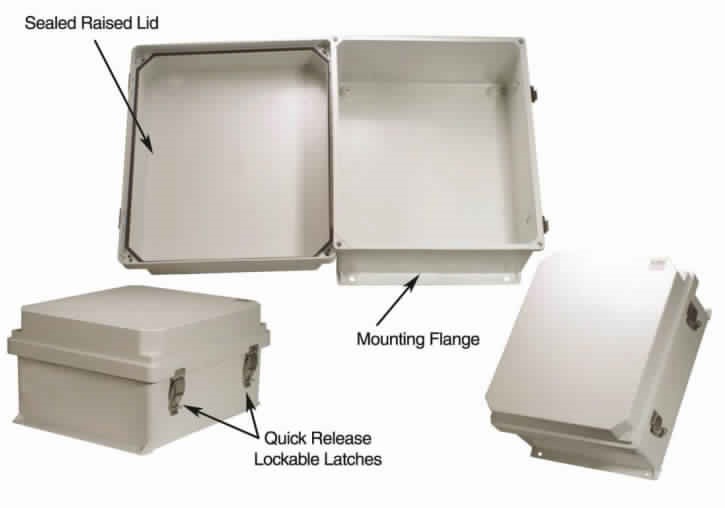
Fig. 2: IP66 rated enclosure
IP Rating Example + Guide
With a rating of IP65, 6 describes the level of protection from solid objects and 5 describes the level of protection from liquids.
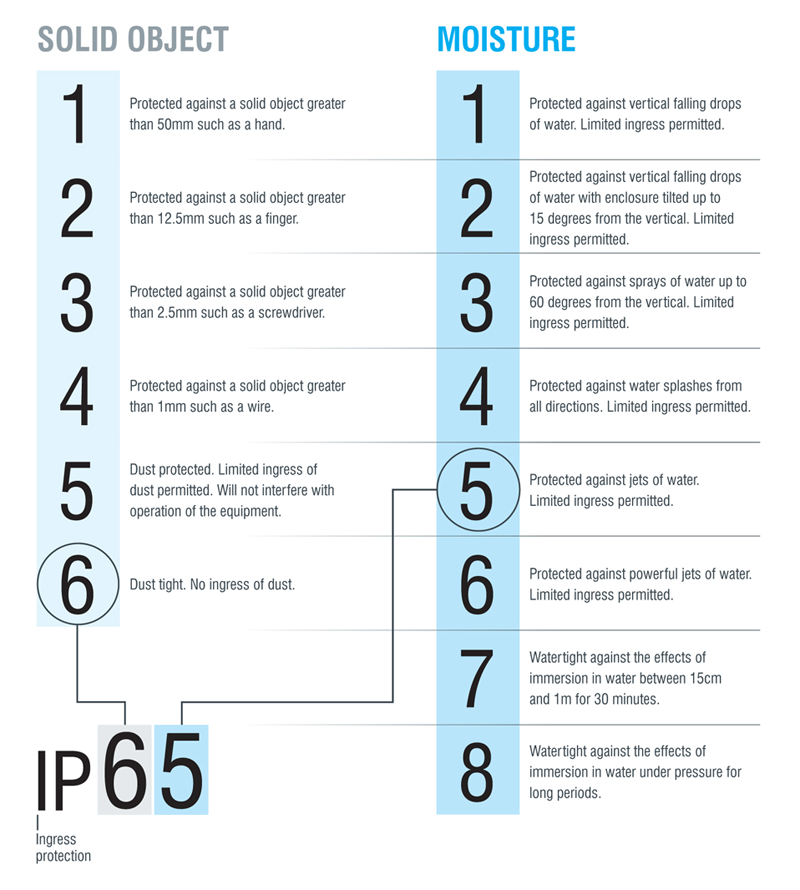
Fig. 3: IP Rating Chart
NEMA vs IP Comparison
NEMA ratings and IP ratings are two unique systems based on a different set of variables. The following comparison of NEMA and IP enclosure ratings is only approximate!
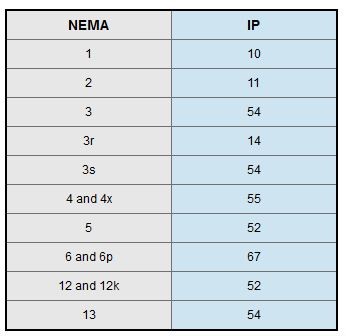
Fig. 4: NEMA vs IP comparison chart
References:
- https://www.delvallebox.com/news/en/ip-and-nema-standards
- https://en.wikipedia.org/wiki/NEMA_enclosure_types
- https://www.nema.org/Standards/About-Standards/Pages/How-to-Read-a-NEMA-Standard.aspx
- https://www.setra.com/blog/what-is-the-difference-between-nema-and-ip-rating-systems
- https://www.flexfireleds.com/led-ip-ratings-led-flex-strip-waterproofing-explained-waterproof-v-nonwaterproof-led-strip-lights/
- https://cdn.automationdirect.com/static/specs/encnemaratings.pdf
- https://www.wika.us/solutions_whats_the_difference_between_nema_ratings_and_ip_ratings_en_us.WIKA
- https://www.psicontrolsolutions.com/blog-what-are-nema-standards
Did you know that we also do Modbus Integration Solutions?
Chipkin has Modbus solutions for almost every situation. We are experts in Modbus RTU/TCP communication and carry a wide variety of Modbus products:
